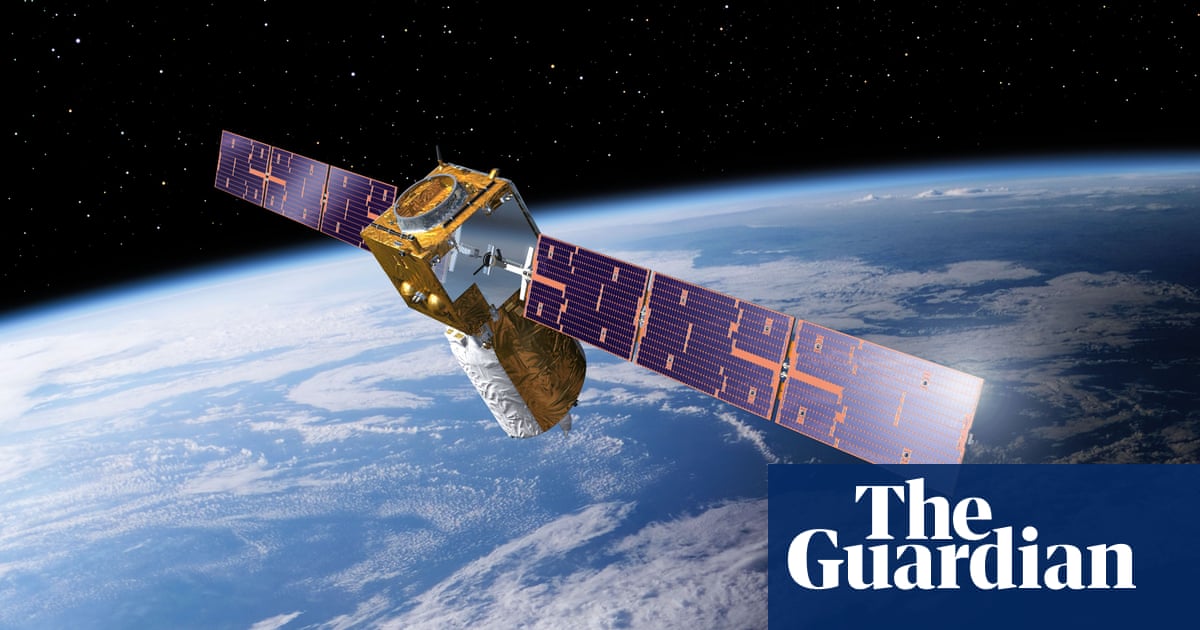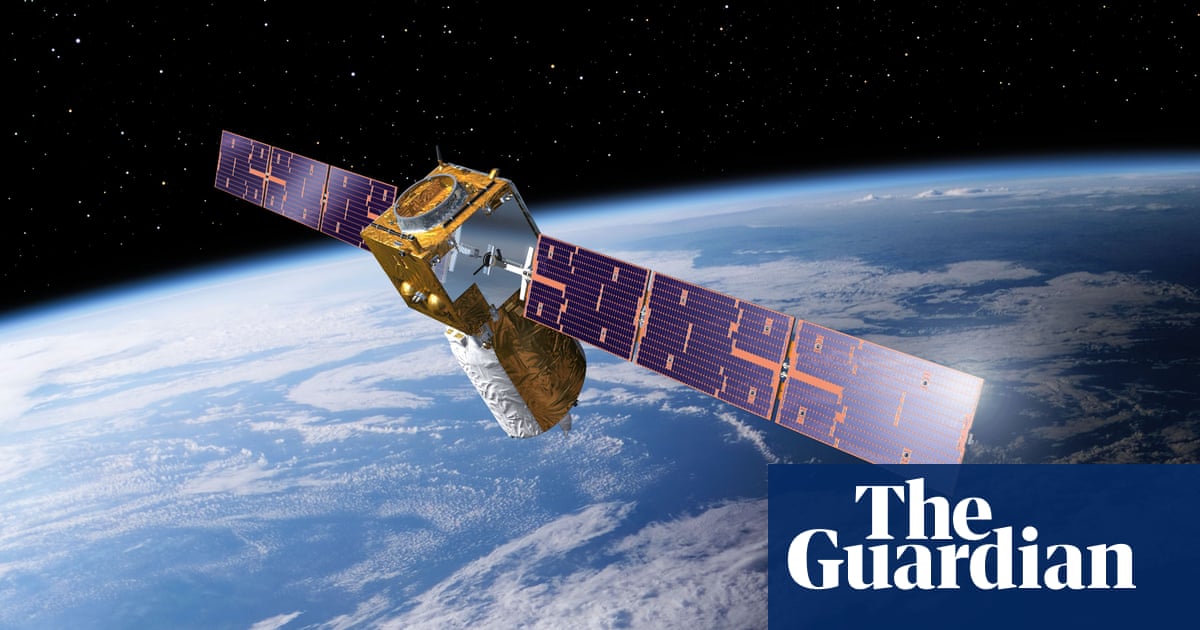
A defunct European satellite is expected to make an unprecedented return to Earth on Friday when mission controllers guide the spacecraft into a fiery dive over the Atlantic Ocean.
The Aeolus weather-monitoring satellite was not designed for a controlled re-entry at the end of its mission, but the European Space Agency (Esa) has decided to use what little fuel remains onboard to steer the probe to a watery grave.
It is the first time a space agency has attempted such a re-entry for one of its dead satellites. Beyond reducing the already extremely low risk of debris striking people or property, the move is intended to gather data for future satellite re-entries and demonstrate best practice, in the hope that other spacefaring nations and organisations follow suit.
Most of the satellite, which weighed 1,360kg on launch, will burn up as it tears through the atmosphere but, as with other re-entering probes, about 20% of the mass is expected to survive. One hundred tonnes of space debris in the form of spent satellites, rocket bodies and other parts plummets into Earth’s atmosphere every year. With Aeolus, Esa is aiming for debris to fall into a long strip of the Atlantic Ocean, where it will sink into the murky depths.
“The spacecraft is not designed to perform a fully controlled re-entry, such as to meet a predefined small target point,” said Holger Krag, head of the space safety programme at Esa. “This is done only by rocket stages and spaceships or cargo ships so far, but not by satellites.
“We are using the onboard propulsion system to come as close to a controlled re-entry as possible,” he added. “We are reducing the risk for any chance of a fragment landing on land by a factor of three compared to the case where no action is taken – that is, compared to a natural re-entry.”
The Aeolus satellite launched in August 2018 and became the first spacecraft to monitor Earth’s wind currents from space. The probe carries a sophisticated laser instrument called a Doppler wind lidar, which has helped researchers improve weather forecasts and climate models.
The spacecraft observed Earth from a low altitude of 200 miles (320km); the International Space Station is typically 50 miles higher. And while space agencies tend to allow satellites to spiral down and burn up in an uncontrolled manner once their missions are over, Esa drew up plans to use the probe’s final wisps of fuel to guide it down more safely.
To steer the satellite, Esa scientists are sending carefully timed commands to the probe to first rotate it through 180 degrees and then fire its thrusters to slow it down. The first braking manoeuvre was performed on Monday when Aeolus fired its thrusters for nearly 40 minutes, dropping its altitude to 155 miles.
The plan called for four more burns on Thursday aimed at slowing the satellite further and reducing its altitude to about 90 miles. On Friday, a final burn should see the satellite fall to an altitude of 75 miles, with re-entry over the Atlantic expected about five hours later.
The process is complicated by Aeolus not being built to operate at such low altitudes. “We are demonstrating what additional efforts can achieve even with a space system not prepared for this,” Krag said.
To limit space debris and reduce the risk of valuable orbits becoming too cluttered to operate in, future satellites will need dedicated propulsion systems to steer them into the ocean once they have fulfilled their purpose, or be designed to burn up completely on re-entry. “Technology for this is under investigation in Esa’s space safety programme,” Krag added.
Christopher Newman, professor of space law and policy at Northumbria University, said: “The management of re-entry is going to be increasingly important as the number of space objects increases. By identifying and demonstrating responsible behaviours in this aspect of post-mission disposal, Esa is demonstrating the leadership that is needed in this area.”










